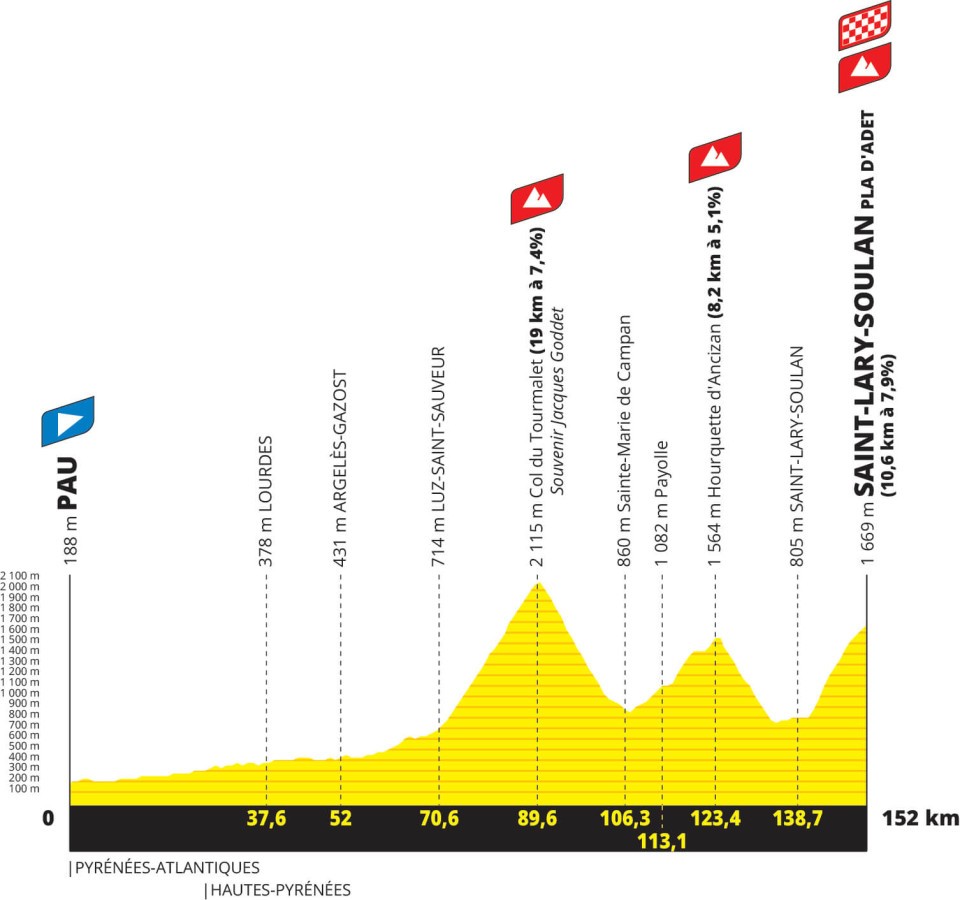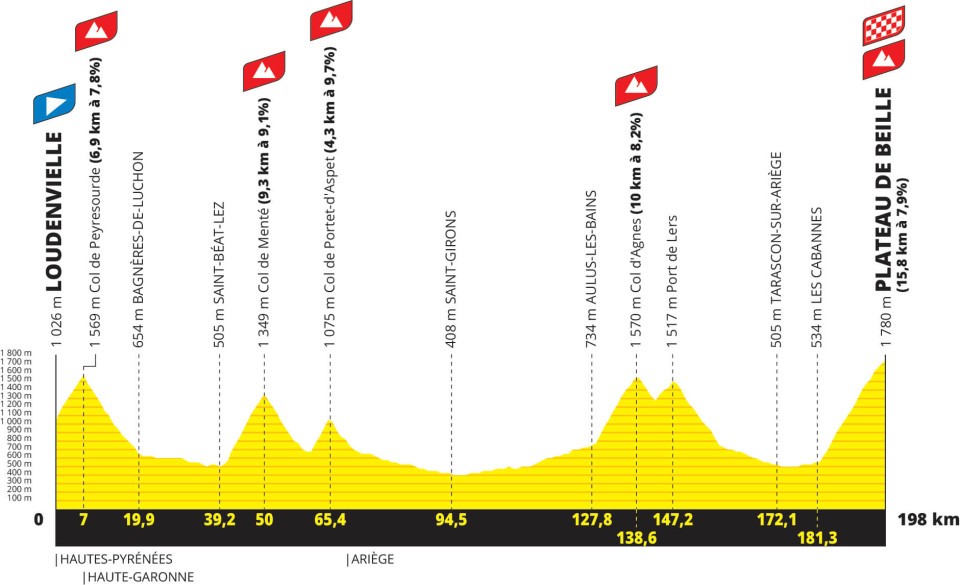
In early July I am heading off to take on 3 mountain stages of the Tour de France back to back with Le Loop. We will be riding the same routes as the pros, exactly a week ahead of them. Le Loop aim to raise as much money as possible for the William Wates Memorial Trust. The trust aims to provide......
Supporting projects that encourage young people experiencing severe disadvantage to keep away from anti-social behaviour and criminal activity, enabling them to fulfil their potential.
I'd normally not ask for sponsorship for doing something I love, but this is an incredible charity, and the effort required on my part is, well, huge. For those of you that cycle the numbers below will mean something. In total over the 3 days I'll be riding 10,846m / 35,584ft of elevation over 521km / 324 miles. For those that don't cycle, to put things into perspective the elevation is equivalent of 1.22 times up Mount Everest from sea level. The days get harder as they go along with the last day being described (and this is in the context of how they think the Pro riders will feel) by a well-respected cycling website as...
That, however, pales in comparison to what’s to come on stage 15, a 198km mountain epic. The sheer difficulty of this stage may discourage riders from taking too many risks in the days prior. The astonishing route scales the Peyresourde (6.9km at 7.8%), from the gun, followed by the vicious Col de Menté (9.3km at 9.1%), the shorter Col de Portet d’Aspet (4.3km at 9.7%), and Col d’Agnès (10km at 8.2%), all before the final haul to Plateau de Beille – 15.8km at 7.9%. The climb was last used in 2015 in the Tour won by Chris Froome and although there weren’t too many GC fireworks that day, the level of climbing beforehand makes this a different beast entirely.
It is going to take some doing. Yes I know the Pros will do this at race pace having already ridden 12 stages to get to Agen, and they will have another 6 stages after the Pyrenees, so who am I to moan, but this is little old me..
If you are able to throw a bit of sponsorship my way that would be absolutely amazing, and very much appreciated. My fundraising page can be found here:-
https://fundraising.wwmt.org/fundraisers/philipwaldman/ride-le-loop
Thanks so so much in advance.
Best wishes
Philip
Stage 13 – Agen to Pau – 171km, 1996m ascent
This is a beautiful all-change stage, taking us from the low-lying Garonne Valley where the skies are blue and it’s always summer (Agen is famous for its sun-ripened prunes) to Pau, the Royal city generally considered the gateway to the Pyrenees which has hosted the Tour de France more often than anywhere except Paris and Bordeaux. The regional change will add to the sense of journey with cultural, architectural and agricultural changes ever couple of hours.
There are some sections of long, straight roads today, perfect for group riding and an extra couple of kilometres per hour. These roads are interspersed with lovely, small French towns where colonnaded squares provide shade to coffee-drinkers and market-goers.
Although this is billed as a flat stage, it avoids the path of least resistance, and there are a couple of short sharp climbs to keep the legs nimble as we work our way south. The mountains loom ahead and are visible long before we approach Pau– a thrilling sign of what’s to come.
Stage 14 – Pau to St Lary Pla d’Adet – 152km, 4000m ascent.
Our first Pyrenean stage includes a robust 4,000m ascent and three classic Tour climbs, including the mighty Tourmalet.
We have a relatively flat start, with no significant climbs for the first 50km as we make our way out of Pau and follow the valleys through Lourdes and Argelès-Gazost, watching the mountains get closer and closer, until they surround us completely. From here, the only way is up – for 19km, with an average gradient of 7.4%, until we stand on top of one of cycling’s most famous cols, with almost 20km of descent awaiting us.
Our next big climb is the gorgeous Hourquette d’Ancizan – a very different hill from the Tourmalet. A quiet, immaculately surfaced road winds us up through shady woodland (with gentler gradients than we’ve endured so far), then out into a peaceful landscape of sheer green hillsides and curious sheep, before shooting us down a fast, tree-lined descent into Saint-Lary (our home for the night).
We have the psychological challenge of passing our hotel before the last, and steepest, climb: a 10.6km slog (with 7.9% average gradient) up to Pla d’Adet. This is a challenging ascent, with the first 5km hovering around the 9% mark, before the gradient lessens in the final laps, leaving us a little energy to appreciate the panoramic views of La Vallée des Nestes.
Then it’s back down the hill to St Lary, a charming ski town for a night in the mountains.
Stage 15 – Loudenvielle to Plateau de Beille – 198km, 4850m ascent.
One way or another, today’s stage will be the ride of your life – we cross five big-name cols, gain close to 5,000m of elevation (4,850m to be exact), and finish on top of the 1,780m Plateau de Beille, where we join Tour history alongside Contador and Pantani.
We start off with an old favourite: the Col de Peyresourde, a scenic 7km climb that made its Tour debut in 1910, and has featured over 50 times since. After a final glance back into the Neste Valley, we whizz down to the pretty spa town of Luchon, enjoy a pleasant roll along the valley, and then set off up the wooded slopes of the Col de Menté. This, and the Col de Portet-d’Aspet, which immediately follows, will hold our steepest gradients of the day, with averages above 9%.
Over the next 30km we descend more than 500m, and briefly emerge from the mountains – but don’t be fooled: there’s much more to come! After turning south in the picturesque riverside town of Saint-Girons we spend another hour or so following the River Garbet back into the thick of it, regaining all the height we just lost as we approach the base of the Col d’Agnes. From here we go down only slightly before reascending to the Port de Lers – a sequence that captures Pyrenean cycling in all its remote, green, sheep-scented glory.
There now remains just the descent to Tarascon, and then our grand finale – the 16km climb up to the Plateau de Beille. This is a test of our tired legs, with an average gradient of 8%, and much steeper sections in the first 5km. But as we emerge above the treeline we’re treated to endless mountaintop views on all sides and a heroes’ welcome at the top.
Due to coach access, we descend 16km from the summit back down to Les Cabanes for dinner and transport to our hotel.

